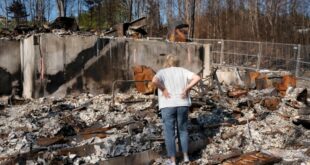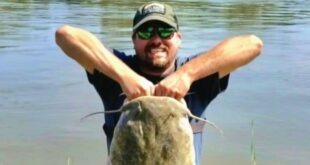The fish, a researcher says, is ‘the closest anybody comes to seeing a dinosaur alive today.’

At up to two metres long and weighing 200 pounds, sturgeon are some of the Great Lakes’ most enchanting fish.
“I always think of them as lonely torpedoes cruising through the Great Lakes,” Trevor Pitcher, a University of Windsor (UWindsor) professor, told Windsor Morning. “It’s essentially a living fossil. It’s the closest anybody comes to seeing a dinosaur alive today.”
A sturgeon’s natural environment is the vast lakes and riverways of North America. But in recent decades, their populations have been declining.
“The decline has varied over the years,” Pitcher said. “Years ago it used to be because of over harvesting in the Great Lakes. [In the] early 1900s we took advantage of that food resource. Then, eventually, shipping lanes ruined their spawning habitat and dams for electricity.”

Now, a UWindsor project, in partnership with the Great Lakes Institute For Environmental Research (GLIER), is breeding the fish for eventual release into the Detroit River.
The project means Windsor is perhaps the only place in Canada where you can see juvenile sturgeon in vast quantities.
From captivity to the lake
Reintroducing sturgeon to the river isn’t as simple as breeding a fish and then throwing it in the water when it comes of age.

Windsor-Essex is one of the last regions in Canada where you can see baby sturgeon
Researcher Trevor Pitcher talks to Windsor Morning host Amy Dodge
“They’re actually raising them in LaSalle right on the Detroit River in these tanks that range from essentially no background … to a very enriched tank with tons of rocks and other things that are more naturalized,” Pitcher said. “Then they’re comparing their behaviours, their stress and their swimming abilities to see which ones do best before we let them go in the future.”
Once the sturgeon are ready for the river, they will be released to go about their lives.
“A lot of times all the fish have tags in them, so we actually end up following them for essentially decades after the program,” Pitcher said. “These guys have kept their ancient form for that long so they live a long time, partly because they’re large and they’re slow growing.”

Olivia Galloway, a master’s of science student at UWindsor, works with Pitcher on the project.
“I do get to go in every month, measure them and see how they’re growing, so that is very fun,” she told CBC News.
“Right now we’re just rearing them in different environments to see if it affects their ability to handle stress, if it affects their growth.”
“The sturgeon swimming by you today probably swam by your grandparents almost 80 years ago.”
ABOUT THE AUTHOR
Oliver Thompson is a writer, producer and musician. Originally from the UK, where he worked for the BBC, Oliver moved to Canada in 2018.
*****
Credit belongs to : www.cbc.ca
 Atin Ito First Filipino Community Newspaper in Ontario
Atin Ito First Filipino Community Newspaper in Ontario







